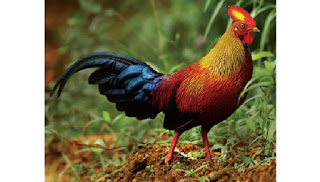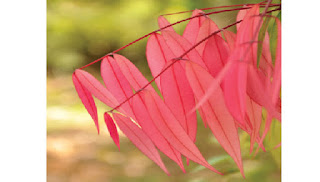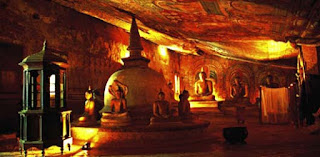Thursday, July 30, 2015
Saturday, July 18, 2015
Sri Lanka Holidays 2015
Sri Lanka Holidays.
http://www.srilankaholidays.co
Auspicious Holiday Season for "Kandy Pera-hara".....Processions..
http://www.srilankaholidays.co
Auspicious Holiday Season for "Kandy Pera-hara".....Processions..
Saturday, July 11, 2015
Sri Lanka at a glance
Sri Lanka is a country lying off the southern tip of India and separated from peninsular India by the Palk Strait. It is located between latitudes 5°55′ and 9°51′ N and longitudes 79°41′ and 81°53′ E and has a maximum length of 432 km and a maximum width of 224 km.
Sri Lanka is known for its stunning natural beauty that attracts hundreds of thousands of travelers every year. Before touching down this paradise island in the tropics, know it at a glance.
Official Name:SRI LANKA (The Democratic Socialist Republic of Sri Lanka)
The National Flag symbolizes:
 |
| Sri Lanka Flag |
-The sword in the lion's hand: the sovereignty of the country.
-Curly hair on the lion's head: religious observance, wisdom and meditation.
-The beard of the lion: purity of words.
-The handle of the sword: three elements of water, fire and earth that the country is made with.
-The nose of the lion: intelligence.
-The two front paws of the lion: purity in handling wealth.
-The orange vertical stripe: the Tamil minority race.
-The green vertical stripe: the Muslim minority race.
- The Bo leaves at the four corners: Buddhism and its influence on the nation, and the four virtues of Buddhism: Loving-Kindness, Compassion, Altruistic Joy, and Equanimity.
-The yellow border round the flag: other minority races.
-The maroon coloured portion of the flag: the minor religions
-The lion: the Sinhala race and the strength of the nation.
The National Emblem
The emblem features a gold lion passant holding a sword in its right fore paw indicating the Sinhala Race. The centre on a maroon background surrounded by golden petals of a lotus indicates the sanctity of Sri Lanka. This is placed on the top of a vase which indicates the prosperity of the country, sheaves of rice grains that circle the border also reflecting the prosperity. The crest is theDharmachakra that symbolizes the country's foremost place for Buddhism and the righteousness of the country and its people. The sun and moon at the bottom depict the eternity.
A very colourful ground bird endemic to Sri Lanka occurring in most large patches of forest in all zones, but is more often heard than seen, Sri Lanka Junglefowl roosts high in trees at night and flies up to tree branches when threatened. It nests in hidden, scraped places on the ground or on pile of vegetation just off the ground.
The National Flower
Blue Water Lily (Nymphaea nouchali)
Blue Water Lily or "Nil Manel" which is found all over the island growing in the shallow water, was declared the National Flower of Sri Lanka on 26th February 1986. Blue water lily that occupies a pre-eminent position in the Buddhist literature, symbolizes virtue, discipline and purity.
The National Tree. Na Tree
"Na" (Mesua nagassarium)
The Ironwood or "Na" Tree was declared the National Tree of Sri Lanka on 26th February 1986.
Originating in Sri Lanka, its utility, historic and cultural importance, exterior posture, wide distribution, colour and nature, ability to draw and sketch it easily have led to select "Na" as the National Tree.
This rainforest tree grows up to about 30m high and is indigenous to the lower wet zone of the island. It has beautiful bright red leaves that finally mature into deep green. Na wood that was used to make bridges in the early times is very hard and durable. Na flower is also used in herbal medicine and preparation of perfumes, cosmetics and soaps. It is believed that Buddha's first visit to Sri Lanka was to grove of Na trees at Mahiyangana and also the next Buddha (Maithriya) will attain enlightenment under a "Na" tree.
Legislative Capital:
Sri Jayewardenepura, Kotte
Commerical Capital:
Colombo
Currency (Code):
Sri Lankan Rupee (LKR)
Administrative Units
9 Provinces | 25 Districts | 160 Electorates | 256 AGA Divisions
Land & Sea Area (km2)
Land Area: 65,525 | Internal Waters: 1,570 | Historic Waters: 12,000 | Territorial Sea: 18,060 | Contiguous Zone: 19,620
Independence:
04th February 1948
Climate
Typically tropical with northeast monsoon (December to March) adn southwest monsoon (June to October).
Rainfall
Annual Average Rainfall: 1675mm | Annual Average Rainy Days: 137 days
Temperature
| oC (oF) Minimum) | Mean oC (oF) | Maximum oC (oF) | |
| Low Country | 24.40 (75.92) | 28.05 (82.49) | 31.70 (89.06) |
| Hill Country | 17.10 (62.78) | 21.47 (70.64) | 26.30 (79.34) |
Population: Population Density:
20,271,464 (2012) 323 km2
Ethnic Groups
Sinhala (74.9%) | Sri Lankan Tamil (11.2%) | Indian Tamil (4.2%) | Sri Lankan Moor (9.2%) | Other (0.5%)
Religious Groups
Buddhist (70.2%) | Hindu (12.6%) | Islam (9.7%) | Roman Catholic (6.1%) | Other (1.4%)
Terrain
Mostly low, flat to rolling plane with mountains in the south-central interior.
Time Zone:
Sri Lanka Standard Time (UTC/GMT + 5:30 Hours)
Mains Electricity:
230 Volts 50 Hertz | Plug/Socket Type: D
Driving
On The Left
International Dialling Code:
+94
Internet TLD:
.lk
UNESCO Heritage Sites
Heritage is indeed our legacy inherited from past generations, maintained at present and passed down to future generations. With a millennia-old history, Sri Lanka boasts a splendid cultural and natural heritage and is home to eight world heritage sites viz. the ancient cities of Polonnaruwa andSigiriya, the sacred cities of Anuradhapura and Kandy, the golden temple of Dambulla, the old town of Galle and its fortifications, Sinharaja Forest Reserve and the Central Highlands.
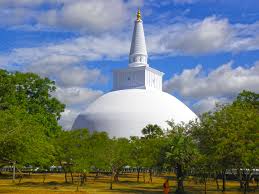 |
| Ruwan Wali Saya |
Anuradhapura
Recorded history refers to Anuradhapura as the first capital of Sri Lanka. This extensive city still holds relics of architectural ruins of its ancient kingdom and Buddhist temples not seen in most parts of the world. Be prepared to grip history the minute you step into this sacred city; Anuradhapura. It is the base of ancient civilization in Sri Lanka and an ancient city with a rich heritage in history, culture, politics and religion.
This UNESCO World Heritage Site offers a deep insight into the life and times of the majestic kings of Sri Lanka and the engineering and architectural potential of the times. The most famed monument is the ruins of the Brazen Palace and the Ruwanwelisaya built by King Dutugemunu in 164BCE. Anuradhapura is one of the three stunning locations inthe Cultural Triangle. Mahamevuna Uyana houses the Sacred Bo Tree or Sri Maha Bodhi, the oldest authenticated sacred tree, which is said to date back to BCE and planted from a sapling from the sanctified tree under which Gautama Buddha attained enlightenment. Another magnificent sight is the Jetavanaramaya, the largest Dagoba in the world. The city is spread with ruins of ancient Dagobas and other sites of religious significance. Their complicated carvings and sculptures are remarkable and the ancient stones speak of the days of yore when the city was ruled by brave kings presided over by Buddhist clergy. Pilgrims around the world flock to Anuradhapura; it is regarded as a place where Buddhism is safeguarded for humanity. It is so unfortunate that the city finally declined in importance due to foreign invasions and went into disorder. Polonnaruwa gained prominence in the 10th century AD. A complete Archaeological Museum located in the city offers a greater understanding of the city’s unique monuments. The city remained the capital for almost 1,000 years and during the height of its rise, commanded great respect and power internationally. There is littleto do in the city apart from visiting the ancient temples, monasteries and tanks. A visit to Anuradhapura leaves the visitor witha sense of wonder and history so deep that the experience lingers long after the visit.
| Polonnaruwa |
Polonnaruwa
Mahavamsa and Chulavansa speak of Pulasthipura; the early historical name of Polonnaruwa; a UNESCO world heritage site, which has a great history of invasions and struggle. Behind it rightfully forms the third element in the Cultural Triangle. Located about 140 kms north east of Kandy, Polonnaruwa offers hours of endless pleasure for history and culture lovers, as there are numerous sights of significance.
Dambulla
Dambulla is part of the Cultural Triangle. It houses the gigantic Dambulla Cave Temple declared a UNESCO World Heritage site. The Dambulla caves date back to 1st century BCE. Originally it was the refuge of King Walagamba, and the caves were later converted into a rock temple. It houses beautiful frescoes and an imposing 15-metre long reclining Buddha and Hindu deities. The caves are considered to be the finest storehouse of Sinhala art and sculpture.
It has five caves under a vast overhanging rock, carved with a drip ledge to keep the interiors dry. In 1938 the architecture was inflated with arched walkways. Inside the caves, the ceilings are painted with complex patterns of religious images following the contours of the rock. There are images of Lord Buddha, and Bodhisattvas, as well as various gods and goddesses. Five caves are converted to shrine rooms. The caves, built at the base of a 150 metre high rock during the Anuradhapura (1stCentury BCE to 993 AD) and Polonnaruwa times (1073 to 1250 AD), are the most inspiring of many cave temples in Sri Lanka.
The largest cave measures about 52 metres from east to west, and 23 metres from the entrance to the back, this amazing cave is 7 metres tall at its highest point. Hindu deities are also represented here, and the kings Walagamba, Nissankamalla, and of Arhant Ananda; the Buddha's most devoted disciple. Within these shrine rooms is housed a collection of one hundred and fi fty statues of the Buddhist Order and the country's history. These statues and paintings represent many eras of Sinhala art and sculpture. The Buddha statues are in varying sizes and outlook; the largest is 15 metres long. One cave has over 1,500 paintings of the Buddha covering the ceiling.
The Dambulla cave monastery is still functional and remains the best-preserved ancient structure in Sri Lanka. This complex dates from the 2nd and 3rd Centuries BCE; it was established as one of the largest and most important monasteries. King Walagamba converted the caves into a temple in the 1st century BCE. Exiled from Anuradhapura, he sought refuge here from South Indian invaders for 15 years. After reclaiming his capital, the King built a temple in thankful worship. Many other kings added to it later and by the 11th century, the caves had become a major religious centre. King Nissankamalla gilded the caves and added about 70 Buddha statues in 1190 AD. During the 18thcentury, the caves were restored and painted by the Kandyan Kings.
A hike to the highest Rose Quartz Mountain Range in South Asia offers the pleasure of a striking view of the neighbouring area for miles around. With a history spanning over 1,000 years, Jathika Namal Uyana, also known as the Ironwood Forest, offers a fascinating trek through a deep jungle comprising of the Sri Lankan national tree, the Na (Iron wood). The forest is of important ecological extent and is the focus of studies by ecologists and students of nature.
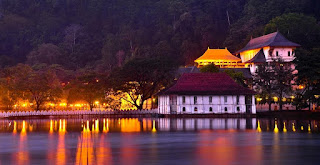 |
| Kandy Temple |
Kandy
Kandy is the last capital of Sri Lanka; its history brings to mind images of riches, marching elephants and much pomp and pageantry. Kandy is amongst a hilly terrain and all eyes are drawn to the centre of the city, where the Kandy Lake forms a charming feature. It's one of the eight UNESCO World Heritage sites in Sri Lanka. Kandy was last home to the Kandyan Kings of yore in the 19thcentury and a fountain for all the music, arts, crafts and culture in the country. Taking in a performance of Kandyan Dancers is rather like fl oating on an unending wave where rhythm and movement become one against the backdrop of the throbbing drums
 |
| Kandy Temple |
Kandy keeps hold of great religious signifi cance for Sri Lanka. It is in this delightful city that the Dalada Maligawa or 'Temple of the Sacred Tooth Relic' lies well guarded since the attack on its building by terrorists. The best time to visit Kandy would be in July/August when you can witness the annual Kandy Esala Perahera, an memorable parade that mirror the pomp and pageantry of kings and more notably an occasion when a replica of the relic casket is paraded. Almost 100 elephants parade along the main streets of the city, adorned with ceremonial gear and are accompanied by dancers and drummers for over 10 fascinating days
Even if you miss this spectacle, there are many more sights and sounds in Kandy that would hold your attention. The Peradeniya Botanical Gardens invite visitors to a learning experience about fl ora and fauna and some majestic trees that can be traced back to centuries. A visit to the National Museum once again highlights the city's royal past and is well worth a stop. The Malwatta and Asgiriya Monasteries house ancient manuscripts and other treasures from a bygone era
Kandy is an exciting place for shopping and a well-known centre for elaborate brass, bronze and silver ware. Batiks, handlooms, ceramics, jewellery, reed ware and jewellery are other readily available items. This hill capital is at the heart of the island's history and identity and no visit to Sri Lanka is complete without a stop-over in Kandy. The Temple of the Sacred Tooth Relic of the Buddha is the most revered Buddhist temple in Sri Lanka. And it is located in the royal palace complex. Since ancient times, the relic has played an important role in local politics because it is believed that whoever holds the relic holds the governance of the country. Kandy was the last capital of the Sinhalese kings and is a UNESCO world heritage site partly due to the temple. Monks of the two chapters of Malwatta and Asgiriya conduct daily worship in the inner chamber of the temple. Rituals are performed three times daily: at dawn, at noon and in the evening. On Wednesdays there is a symbolic bathing of the Sacred Relic with an herbal preparation made from scented water and fragrant fl owers, called 'Nanumura Mangalaya'. This holy water is believed to contain healing powers and is distributed among those present
The temple sustained damage from the bombings by Tamil terrorists but was fully restored. Fortifi ed by a terrain of mountains and the diffi cult approach Kandy managed to operate independently till 1815. It was built within the royal palace complex which houses one of the two surviving relics of the tooth of Buddha, an object of veneration for Buddhists. The other Sacred Tooth Relic is believed to be enshrined in a Stupa called Somawathie chetiya. The Sri Dalada Maligawa in Kandy, the temple which houses the Sacred Tooth Relic of the Buddha, is perhaps the most venerated sacred Buddhist shrine in the world not only by Buddhists of Sri Lanka but also by Buddhists all over the world.
King Vimaladharmasuriya I (1592 - 1603) was the fi rst to select Kandy as the ruling capital, originally built a two storied temple for the Relic and brought the Tooth Relic from Delgamu Raja Maha Viharaya near Kuruwita in Sabaragamuwa province, hidden for protection from Portuguese. King Vimaladharmasuriya II (1686 - 1706) built a three storied temple and his son King Viraparakrama Narendrasingha (1706 - 1738), the last Sinhala king to rule the country, built a new two storied temple seeing that the old temple built by his father had decayed
The last king of Sri Lanka, Sri Wickrama Rajasingha (1797- 1814) built the Pattirippuwa (the Octagon). Originally, the Pattirippuwa was part of the royal palace which was used by the king to address his fellow countrymen. Today the Pattirippuwa has become a part of the temple and houses ancient textures written in Ola leaves. The entrance to the temple complex is through the "Maha Vahalkada". There are two walls on the sides of the "Vahalkada". The outer wall is called "Walakulu Bamma" (wall of clouds). This same pattern is also used in the wall surrounding the Kandy Lake. The inner wall is called "Diyareli Bamma" (wall of water ripples). Both these walls are built with holes to place oil lanterns during the night. After passing the "Vahalkada" and the moat, is the "Makara Thorana". Next is the tunnel "Ambarawa". Passing this you come to the ground fl oor of the temple complex. The lower fl oor of the building called "Pallemaluwa". This inner chamber is fortifi ed with a large wooden door and decorated with bronze and ivory. The area in front of the door is called the "Hevisi Mandapaya" (Drummers Courtyard) where the daily rituals are carried out. The tooth relic is kept in the upper fl oor in the chamber called "Vadahitina Maligawa" The door to this chamber is covered with gold silver and ivory. The tooth relic is encased in seven gold caskets studded with precious stones. The outer casket is studded by precious stones offered to the tooth relic by various rulers. On the right to the relic is the "Perahara Karanduwa" (relic chamber used in the annual Esala Mangalya Perahera (procession) kept inside a bullet proof glass display. This has been donated by India. Over the relic chamber there is a golden lotus fl ower studded with precious stones hanging from the ceiling. On to the left of the temple is the new building which houses the taxidermy remains of the Maligawa Tusker - Raja. This magnifi cent Tusker was captured in the jungles of Eravur in the Batticaloa District 1925. He was purchased by Tikiri Banda Manampitiya Disawe for Rs 3,300/- in 1937 and was donated to the temple by him. For over 50 years Raja carried the golden casket which carried the tooth relic and in 1984 he was declared as a national treasure by the government. This is the second time a Tusker has been declared a national treasure.
Galle Fort
Sir Emerson Tennant claims that Galle was the "Tarshish" mentioned in the Bible, as the harbour where ships trading with King Solomon obtained their Elephants, Peacocks and Gemstones. Most certainly the place where the Galle Fort now stands as well as other areas in Galle like Unawatuna, Magalle, Kaluwella and even the China Gardens (which held a colony of Chinese traders several years ago) were all areas with historic connections which go long before the Portuguese Era. International traders, Persians, Moor traders from the Persian Gulf, South Indian traders, Malays and especially the Chinese and a host of other nationalities lived and traded in Galle. The Cripps Road inscription reveals the polyglot and poly-ethnic character of Galle. Even in early British times the earliest embassies were situated in Galle. For example the fi rst Consul from USA was resident in Galle.
The Galle Fort was built by the Dutch during their rule and it is the largest and the most secured fortress in Sri Lanka. It was declared an archeological reserve by the UN since 1969 and in December 1988, UNESCO declared Galle Fort World Heritage 38th Monument. A Parliament bill titled Galle Heritage Foundation Act was passed in 1994 in Sri Lanka. In addition to these entire claim, Galle Fort is unique, very special and charming as there are no other sites, areas, fortress or location when compared with Galle Fort walled city of 38 hectares (90 acres) in Sri Lanka.
The Fort of Galle is the living symbol of all this history unless the Sri Lankan Government turns out to be conscious of its responsibility to protect and preserve the tangible remains of our history; not only in Galle, but also all over Sri Lanka, otherwise all will be lost. Let the world heritage site of Galle remain symbolic of its heritage and not become a centre of palatial dwellings of foreigners, night clubs and all that go with them.
It is the only place in Sri Lanka that still retains a unique old world atmosphere and its unique place in the history of VOC. It houses eight religious institutions that include Temples, Y.M.B.A, and Y.W.C.A churches, Mosques, Zaviyas and Thakkiyas etc, that have pioneered and propagated religion and upheld all cultural values, morals, traditions, customs and other activities for several centuries. Galle is also home to educational institutions such as Southlands Maha Balika Vidyalaya established, in 1885 for girls, All Saints Maha Vidyalaya established in 1876 for boys, Al Bahjathul Ibrahimiya Arabic College established in 1892 for boys from all over Sri Lanka and three other Montessori schools are in operation.
Eighty per cent of Galle Fort has remained valued residential location. It has around 375 dwelling houses of Sinhalese, Muslims, Tamils, Burghers and others living for years in total harmony without any communal differences. Galle Fort remains an esteemed and respected residential location for centuries, with its rich religious, educational and cultural values. It has also been producing eminent scholars, educationists, doctors, engineers, lawyers, professionals and reputed businessmen. In addition, there are some 25 small business premises and about 16 government offices.
The sea beaches and the beautiful ramparts surrounding the Fort have become nature's inspiration which has been often featured in many magazines both here and abroad. The history of Galle Fort reveals that it has maintained a fl awless reputation, devoid of criminal records at all times resulting in all communities within the Fort living in peace and amity upholding all human values. The combination of historical, archaeological, and architectural institutional and residential, buildings and the fortress has inspired and infl uenced UNESCO to declare Galle Fortress as a world heritage which should last for many centuries to come than being modifi ed and converted into varied types of liquor bars and vice dens.
Galle is one of 213 places of great historical value in the world that should be conserved and protected for posterity. Perhaps the earliest recorded reference to Galle comes from the great Arab traveller Ibn Batuta, who visited the port which he calls Qali-in the mid-14th century. The Portuguese fi rst arrived in 1505, when a fl eet commanded by Lorenzo de Almeida took shelter from a storm. Clearly the strategic signifi cance of the harbour impressed the Portuguese, for 82 years later, in 1587; they seized control of the town from the Sinhala kings and began the construction of the Galle Fort. This event marked the beginning of almost four centuries of European domination of the city, resulting in the fascinating hybrid-architecturally, culturally and ethnically-which Galle is today.
The Dutch captured the city from the Portuguese in 1640, and immediately began strengthening the defenses. They remained for almost 150 years, until the city was in turn taken by the British in 1796. Not until 1947, when Ceylon gained its independence from the British, did Galle become, once again, an independent city-and by this time the long years of association with European colonialism had left an lasting stamp on the city which makes it unique in today's Sri Lanka. In recognition of this fact, the Old City of Galle-essentially the fort and its surroundings-was declared a World Heritage Site in 1988.
Sinharaja Forest Reserve
Sinharaja Forest Reserve is a national park and a biodiversity hotspot in Sri Lanka. It is of international signifi cance and has been designated a Biosphere Reserve and World Heritage Site by UNESCO.
The hilly virgin rainforest, part of Sri Lanka’s lowland rain forests eco region, was saved from the worst of commercial logging by its inaccessibility, and was designated a World Biosphere Reserve in 1978 and a World Heritage Site in 1988. The reserve’s name translates as Kingdom of the Lion. It is a treasure trove of endemic species, including trees, insects, amphibians, reptiles, birds and mammals. Because of the dense vegetation, wildlife is not as easily seen as at dry-zone national parks such as Yala. There are about 3 elephants and the 15 or so leopards are rarely seen. The commonest larger mammal is the endemic Purplefaced Languor. An interesting phenomenon is that birds tend to move in mixed feeding flocks, invariably led by the fearless Greater Racket-tailed Drongo and the noisy Orange-billed Babbler. Of Sri Lanka’s 26 endemic birds, the 20 rainforest species all occur here, including the elusive Redfaced Malkoha, Green-billed Coucal and Sri Lanka Blue Magpie. Reptiles include the endemic Green pit viper and Hump-nosed vipers, and there are a large variety of amphibians, especially tree frogs. Invertebrates include the endemic Common Bird wing butterfly and the inevitable leeches. Flora: - The vegetation of Sinharaja may be described either as a tropical lowland rain forest or tropical wet evergreen forest. Some striking characteristics of the forest are the loftiness of the dominant trees, the straightness of their bole, the abundance of regeneration and the diversity of species. Average height of the trees varies between 35 -40 metres, some rise even up to 50 metres. The vegetation of Sinharaja is that of humid wet evergreen forest type with a high degree of endemism. In fact some families such as Dipterocarpaceae show an endemism more than 90%. The untapped genetic potential of Sinharaja flora is enormous. Out of the 211 woody trees and lianas so far identifi ed within the reserve 139 (66%) are endemic. Similarly, high levels of endemism are.
perhaps true for the lower plants like ferns, epiphytes as well as out of 25 general endemic to Sri Lanka 13 are represented in Sinharaja. The total vegetation density, including trees, shrubs, herbs and seedlings has been estimated to be around 240,000 individuals per hectare, of which 95% comprise individuals of the ground layer bellow 1 metre in height.
Fauna: - Studies on the fauna of Sinharaja have revealed that there is a high degree of endemism among the butterflies, fi sh, amphibians, reptiles, birds and mammals being greater than 50%. There have been reports of sightings of a few animals including elephants in the eastern Sector. The most common deer species is the Sambhur and the barking deer are also found within the reserve. Leopards are very seldom sighted, but their frequent presence has been confi rmed by tracks and other signs. Badger Mongoose and the Golden Palm Civet have been occasionally sighted. The most commonly seen primate is the Purple - faced Leaf Monkey. Although the elephants are said to be common in the past, there have been reports of sightings in 2008. Out of the Birds recorded in the western sector of the reserve, 72% were resident non-endemic and 13% migrants. One of the most interesting and colourful spectacles to be found in the Sinharaja is the presence of mixed species of foraging bird flocks, a phenomenon commonly found in rain forests and a total of 100 such flocks were systematically observed, and studies have revealed that some flocks contained 48 species including 12 endemic species. The rare endemic birds to be seen in Sinharaja are the Red-faced Malkoha, the Sri Lanka Blue Magpie, the Ashy-headed Babbler, and the White-headed Starling and the Green-billed Coucal the rarest of Sri Lankan birds. Agamids are the best represented group of reptiles, the most common being the Green Garden Lizard. Of Special signifi cance are the sightings of Calottes’ Liolepis an arboreal species, the rarest of all agamid found in the island. The only Tortoise recorded in the reserve is the Hard-shelled Terrapin, while of the species of skinks, the spotted skink can often be seen. Among the snakes the endemic Green Pit Viper and Hump-nosed Viper are commonly found in this forest. The amphibians are fairly well represented in the reserve and nine endemic species have been identifi ed. The endemic Torrent toad and the common house toad are found in most streams and marshes. The Wrinkled Frog and the Sri Lankan Reed Frog is also found in the Sinharaja.
Subscribe to:
Posts (Atom)







